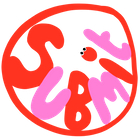As one of the oldest methods of divination, hands are considered portals to understand our past, present and future. Understanding palm reading basics, including the love line, isn’t as hard as you would think. COSY explores various techniques and tricks to help perfect love and marriage reading mastery.
Using the hand is a powerful, ancient form of divination that anyone can use today. The mystical art of palmistry is still actively practiced all over the world and can let us get to know ourselves and our loved ones better. The shape of the hand, length of fingers, fingertips and knuckles govern the different spheres of human life through the various lines and curves that determine our patterns. These areas include health, love, emotional expressiveness and success in a career.
Ever since ancient times, astrologers and fortune-tellers have held noble positions in society. Many people seem to turn towards them, especially in times of adversity. People have always revered palmistry as a sacred and esteemed art that reveals destiny, fortune and fate by studying the hand and its markings.
How did palmistry emerge?
The most prominent palmistry methods and practices are rooted in Romani Culture, Vedic Astrology, and Chinese spiritual practices. There are three schools from which present day palmistry evolved: Indian, Chinese and Western.
The origins of palmistry are uncertain, but most scholars believe the practice originated in India where traditional fortune-telling of the Roma (Gypsies) was derived more than 5,000 years ago. Palmistry became popular and spread to other areas such as China, Egypt and Europe. Great historical leaders like Aristotle discovered a treatise on palmistry on an altar to the god Hermes. The Greek physicians Hypocrites and Galen were both knowledgeable about the use of palmistry as a clinical aid. Julius Caesar judged his men by palmistry. The practice was forced underground by the Catholic Church who branded it “devil worshiping,” and executed those who practiced it.
Palmistry underwent a huge revival as occult practices grew more popular in the 19th century. Chirological societies were founded to advance the practice in the US and the UK. Renowned palm reader William John Warner – known as Cheiro – gained a mass following and helped palmistry evolve for it to be used within Western cultures.

How do I do it?
To start off, many modern readers believe it’s important to analyze both the left and right hands. The non-dominant hand reveals personality, character and the attributes you’re born with. The dominant hand represents attributes cultivated throughout your lifetime.
The left hand is controlled by the right brain, which rules pattern recognition and relationship understanding. The left hand is the “yin” or the feminine personality that governs emotions, inner persona and the natural, spiritual self. The right hand is the “yang” and is the masculine aspect of ourselves which rules logic, reason and language. It also reflects the outer persona, objective self, social environments, education and experience.
Begin with observing the texture and flexibility of the palm. Is the front smooth or rough? Are fingers polished or dirty? Every detail has meaning when infusing palmistry with intuition. Move on to checking the squishy bumps below the fingers or the mounts, these represent ambition, money and creativity.
Take a deeper look at the strength and condition of the lines, on a spiritual level, they represent emotions, mentality and vitality. There’s four main lines throughout the palm; Heart (at the top, under fingers), Head (across the middle of hand), Life (curving around thumb) and Fate (center of palm).
Heart Line: The heart line concerns all matters dealing with love, romance, passion and intimacy. It is found directly where your hand folds, below your fingers.
Head Line: Concerns intellect, wisdom, intelligence, learning and skill acquisition. This line starts usually under the index finger and stretches across the length of the palm. It is not uncommon to see the head line combined with the life line.
Life Line: Represents one’s health, physicality, vigor and vitality. It can reveal patterns of illness or sickness and can represent major changes that may arise over an individual’s life. The length of one’s life line is not an indicator of how long a person will live, but rather what challenges and obstacles a person may face while living. The line appears where the ball of the thumb meets the palm.
Fate Line: A person’s fate line deals with an individual’s destiny and career. It also represents personal growth and achievement. The line ultimately tells you what the future holds in store, but not everyone has a clearly defined fate line. It is the vertical line which cuts down through the center of the palm.
The heart line does not predict sex partners or if your significant other is cheating on you! Instead, it shows different love styles, how you approach matters of the heart, attractors in romance and how you accept yourself and others. The heart line lives at the top of the hand, below the fingers. After identifying it, note whether it begins below the index or middle finger.
The heart line can start below your middle or index finger. If the line starts under the index finger, it hints at a satisfying – but selective – approach to love. If a line starts beneath the middle finger, it can suggest selfish approaches to love and affection.
The line can curve from the edge of the palm under the pinky, toward the index finger, indicating a “caring, passionate, giving and intuitive” lover in relationships. If the line curves dramatically upwards by the middle finger, this suggests a passionate person who’s focused on their desires, ambitions and has an energetic life force in relationships.
Observing a deeper love line implies investing a lot of time, thought and energy into nurturing your relationships. Faint lines indicate you’re less interested in matters of the heart.
Forks reveal ability to balance emotions and logic, meanwhile, a strong curve means comfortability expressing feelings. Breaks in the line do not indicate short-lived relationships or breakups, but rather, emotional issues within yourself.
Flatter heart lines could also mean someone is thoughtful and considerate, with a tendency to intensely express their feelings in relationships. The length of the line corresponds with time spent coupled (longer lines represent lengthier partnerships). Short lines that stop under the middle finger and don’t curve up mean the person likes to be more independent and needs alone time.
There are various mounts in different positions of the palm which are associated with planets. The mount of Venus also indicates love in palmistry. This mount is found beside the thumb and within the curved Life Line. Generally, fleshiness here indicates a love of pleasure. A fleshy Venus mount conveys a strongly sexual nature, and a flabby mount here shows a low level of sexual vitality.
Prominent horizontal lines on the Mount of Venus are thought to indicate a person with powerful charm over lovers. Plenty of fine lines going in different directions on this mount (often looking like a grid) suggests a person who is quite complex in the area of love. A changeable, worrisome character may frustrate lovers. In general, lots of fine lines here indicate a person who is easily influenced by outside forces. This person may be easy to fool or manipulate by partners. A triangle on this mount is thought to indicate a person who may have extramarital affairs, and a crescent shape (moon) here suggests one who has powerful seductive powers.
After familiarizing yourself on how to interpret your love line, the answers to your love life literally lie in the palm of your hands and your intuition will inspire you to develop your own meanings.















